Youth Takes a Fling
Cast & Crew
Archie Mayo
Andrea Leeds
Joel Mccrea
Frank Jenks
Dorothea Kent
Isabel Jeans
Film Details
Technical Specs

Synopsis
Joe Meadows, who hails from a Kansas wheat farm, has prepared for a life at sea by reading books and, finally ready to pursue his dream of being a sailor, moves to New York City. He is unable to fulfill his ambition, however, as there is no work available, and so takes a job at Duke and Tilson's department store as a delivery truck driver. Helen Brown, a wedding gown salesperson who has been praying for the right man, decides that Joe is the man for her. In spite of several dates arranged by Helen's friend Jean, a fellow salesgirl, and Jean's sweetheart, Frank Munson, another driver, Joe resists Helen's charms. Frank teases Joe about the possibility of marrying Helen, which prompts Joe to beg for a job as a sailor. He is hired to work on a munitions boat headed for China and has only a few days before he leaves. Helen is devastated by this news, but Jean and Madge, a flirtatious salesperson, offer to help. Helen uses her own influence to induce the manager to offer Joe a job as dispatcher, but Joe declines. Joe attends the company picnic at a resort hotel along the Hudson River so he can flirt with Madge, but she pretends to leave to help a sick grandmother, and he is thrown in with Helen. Upon discovering Madge's ruse, Joe angrily deserts Helen and goes to his room to pack. Helen tries on a wedding dress purchased by her client, Mrs. Merrivale, that she has been entrusted to deliver. While she is outside on the moonlit lawn, Joe sees her in the dress and is finally overcome by love for her. While they are kissing, however, a riverboat whistle blows and Joe, once again mindful of his goal, is recalled to his packing. The thousand-dollar wedding dress is ruined by rain and a distraught Helen insists that Joe find a way to delay the Merrivale wedding until she can clean the dress. Back in the city, Helen confesses her misdeed to a sympathetic Mrs. Merrivale. The wedding is postponed when Joe gives the groom a black eye and is thrown in jail. He misses his departure and when released catches a tug boat that will meet the munitions boat. Helen joins Joe on the tug at the last minute. To Joe's surprise, he becomes violently seasick while still in the harbor. The tug is unable to catch up to the munitions boat and returns to land while Helen nurses Joe. Joe admits his love for Helen, and that he is no sailor, and they marry.

Director

Archie Mayo
Cast

Andrea Leeds

Joel Mccrea
Frank Jenks
Dorothea Kent

Isabel Jeans

Virginia Grey
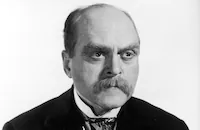
Grant Mitchell
Henry Mollison
Brandon Tynan
Oscar O'shea
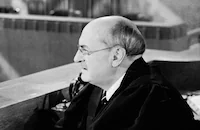
Granville Bates
Roger Davis

Marion Martin
Olaf Hytten

Willie Best
Catherine Proctor
Yvonne Boisseau

Arthur Housman
John Sheehan
Chester Clute
Wade Boteler
Tom Dugan
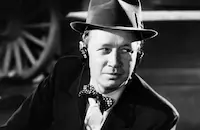
Eddie Acuff
Pat West
Edward Earle
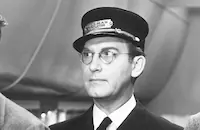
Emmett Vogan
Frank Sully
George Offerman Jr.
Neal Dodd
Mary Field
Charles Sullivan
Edwin August
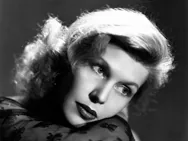
Kathryn Marlow
Beryl Wallace
Anne Wigton
Jenifer Gray
Marjorie Kane
Marion Pierce
Eve Abbott
Joyce Bryant
Helen Lynd
Bob Edward Ryan
Solly Ward
Nick Copeland
Crew
Harold Adamson
Bernard B. Brown
Philip Cahn
Myles Connolly
Myles Connolly
William Fox
R. A. Gausman
Eliot Gibbons
Charles Henderson
Hal Herman
Rudolph Maté
Jimmy Mchugh
Jack Otterson
Joe Pasternak
Charles Previn
Tom Reed
Tom Reed
Richard H. Riedel
Frank Shaw
Frank Skinner
Frank Tate
Vera West

Film Details
Technical Specs

Articles
Virginia Grey (1917-2004)
She was was born in Los Angeles on March 22, 1917, and was exposed to the film industry at a very young age. Her father, Ray Grey, was a Keystone Cop and acted in several other of Mack Sennett's comedies with the likes of Mabel Normand, Dorothy Gish and Ben Turpin. When her father died when she was still a child, Virginia's mother encouraged her to join the acting game and audition for the role of Eva for Uncle Tom's Cabin, a big budget picture for Universal Studios in the day. She won the role, and acted in a few more pictures at the studio: The Michigan Kid and Heart to Heart (both 1928), before she decided to temporarily leave acting to finish her schooling.
She returned to films after graduating from high school, and after bouncing around Hollywood doing bits for various studios, she hooked up with MGM in 1938. Her roles in her first few films were fairly non-descript: In Test Pilot and Ladies in Distress (both 1938), she did little more than look pretty, but in the following year she had scene-stealing parts in The Women (upstaging Joan Crawford in a delicious scene as a wisecracking perfume counter girl) and as the suffering heroine in Another Thin Man (both 1939).
Despite her versatility (she could handle comedy or drama with equal effectiveness), MGM would cast her in some above-average, but hardly starmaking movies: Whistling in the Dark, The Big Store (both 1941), and Tarzan's New York Adventure (1942). She left MGM in 1943 and became a freelance actress for several studios, but her material as a leading lady throughout the '40s were mediocre: Swamp Fire, House of Horrors (both 1946), and Mexican Hayride (1948) were sadly the more interesting films in her post-MGM period. But by the '50s she was a well-established character actress, appearing in fairly big-budget pictures: All That Heaven Allows, The Rose Tattoo (both 1955), Jeanne Eagels (1957).
In the '60s, Grey turned to television and found work on a variety of hit shows: Wagon Train, Peter Gunn, Bonanza, My Three Sons, I Spy, and several others; plus she also captured a a couple of notable supporting parts in these films: Madame X (1966), and Airport (1970), before retiring completely from acting in the early '70s. She is survived by her sister, Lorraine Grey Heindorf, two nieces and two nephews.
by Michael T. Toole

Virginia Grey (1917-2004)
Quotes
Trivia
Notes
The working titles of the film were The Wedding Dress and Youth Marches On. Samuel Goldwyn loaned Joel McCrea, Archie Mayo and Andrea Leeds for this production. A Universal properties book notes that "legal books" credit Philip G. Epstein with the "original," however, the properties book credits the original story to Eliot Gibbons, who worked on a screenplay with F. Hugh Herbert in September 1937. The property was purchased for one dollar. Further information reveals that Tom Reed worked on a screenplay with Myles Connolly in May and June 1938. Philip Epstein and F. Hugh Herbert's contribution to the final film has not been determined.














